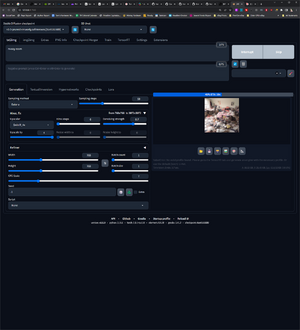SwinIR_4x was the setting I used ... sorry for the confusion!
I also use the base Automatic111 install.
Not sure why your resize slider doesn't go to 8x.
I didn't set many other settings besides the upscaler, image scale multiplier and the image itself.
Upscaler 2 is set to none
GFPGAN visibility, CodeFormer visibility, CodeFormer weight sliders at the bottom are set to 0.
Was able to upscale a 450x303 picture to 3600x2424 in 41.79s ...8x
Postprocess upscale by: 8, Postprocess upscaler: SwinIR_4x
Time taken: 41.79s
Torch active/reserved: 2982/3676 MiB, Sys VRAM: 5914/12288 MiB (48.13%)
Was able to upscale a 1024x1024 picture to 8192x8192 in 5 minutes 20 seconds.
Postprocess upscale by: 8, Postprocess upscaler: SwinIR_4x
Time taken: 5m20s
Torch active/reserved: 6943/9058 MiB, Sys VRAM: 11424/12288 MiB (92.97%)
Looking at those results a 12 gigabyte card may be needed for an 8x upscale on a 1024x1024 image.
More pixels takes more vram but the relationship is a bit unclear.
Multiplying it all out 1024x1024 is 7.69 times the amount of pixels as 450x303, but only about twice the amount of vram.



